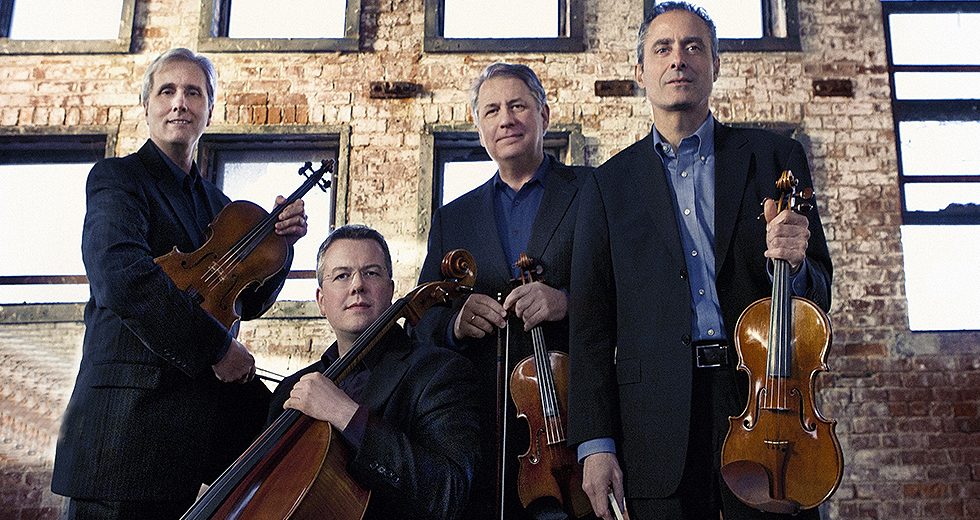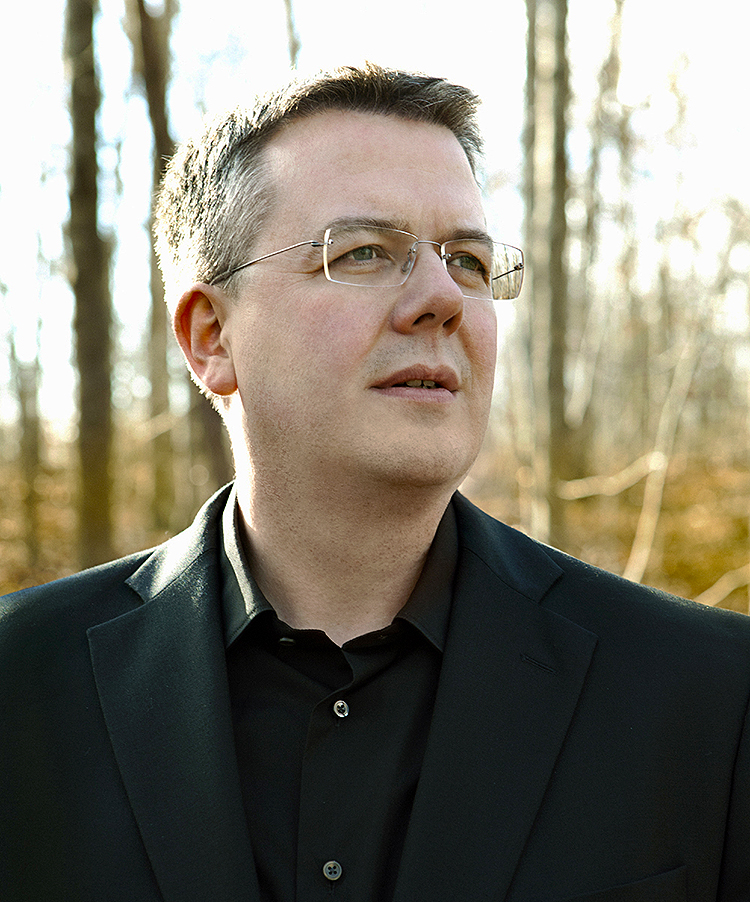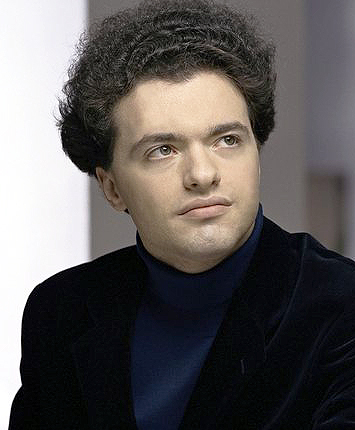
During its more than four-decade history, the Emerson String Quartet has frequently teamed up with a range of notable musicians, including pianists Jeffrey Kahane, Elisabeth Leonskaja and Menahem Pressler; bassist Edgar Meyer; cellist Mstislav Rostropovich, and flutist Carol Wincenc. For its latest collaboration, the quartet will perform with perhaps its highest-profile partner yet, pianist Evgeny Kissin.
“I don’t know how we compare to other string quartets of our age and experience,” said Welsh cellist Paul Watkins, who joined the quartet in 2013. “But it seems to me that certainly since I’ve been in the quartet, we’ve done a lot of collaboration, and I think that’s good.”

Paul Watkins, cellist of the Emerson String Quartet, says collaboration “gives us a different kind of energy.” | Photo: IMG Artists
Besides offering the quartet a chance to perform repertoire it couldn’t perform on its own, such partnerships give the Emerson a chance to bring other artistic perspectives into its music-making. “I think that gives us a different kind of energy and can sometimes — and certainly in the case of Kissin — change the way that we play,” said Watkins of the Emerson, which will join forces with Kissin for a concert April 15 as part of the SCP Chamber Music Series. “We’ve never been an insular string quartet. Some quartets, I believe, even have unspoken rules that their members don’t collaborate with anybody else while the quartet is playing in season. We’re not like that.”
In looking for suitable collaborators, the Emerson draws on old acquaintances or seeks out artists its members have come to admire. “For example,” Watkins said, “there are people now that I think would be wonderful artists to collaborate with, people I’ve worked with in the United Kingdom, and I’m hoping in the next few years we might be able to arrange some things with new people.”
One of the most “joyous collaborations” the group has had in recent years, the cellist said, has been with the Calidore String Quartet, formed in 2010 at the Colburn School, the music conservatory in Los Angeles. Watkins praised the group, which the Emerson has mentored, as one of the world’s top young quartets; his ensemble has enjoyed performing sextets and octets by Bruckner, Mendelssohn and Shostakovich with the Calidore during the past year or so.
Kissin, the formidable Russian-born pianist, sprang onto the international stage in 1984 when he was 12 years old, performing and recording Chopin’s Piano Concertos Nos. 1 and 2 with the Moscow State Philharmonic. He began touring the following year and has enjoyed a towering career as a soloist since. (After the Emerson concert, he returns for an SCP Piano recital on May 13.)

Evgeny Kissin joins the Emerson String Quartet for a three-city U.S. tour this season. | Photo: Sheila Rock/IMG Artists
Because he is such a forceful and distinctive soloist, Kissin might not seem at first blush to be an obvious choice as a quartet partner. “Even though he’s not done a tremendous amount of chamber-music collaboration in the past,” Watkins said, “now at this stage in his career he is interested in branching out and doing other things.”
The Kissin-Emerson association has been in the works for nearly two years, a period in which the pianist and quartet have attended each other’s concerts and carried on extensive discussions. The first time the five musicians played together was at the beginning of this year, when they undertook a tour together in Europe.
“From the first notes we played with him, we were just really struck with the extraordinary command of the instrument that he has but also this amazingly deep ringing sound that he brings out of the piano in whatever he plays,” Watkins said. “But he’s also a master in adapting his style, and perhaps that was something of a surprise to us. It’s been remarkable to witness how he has melded his playing with ours.”
Kissin and the Emerson’s concert in Orchestra Hall, their first together in the United States, kicks off a short American tour that also will include stops at New York’s Carnegie Hall and Boston’s Jordan Hall. They will perform three bedrock chamber works: Mozart’s Piano Quartet in G Minor, K. 478; Fauré’s Piano Quartet No. 1 and Dvořák’s Piano Quintet No. 2. “It’s a big program,” Watkins said. “I suppose the Fauré would be the piece which is perhaps least associated with someone like Kissin, but they are all really substantial piano parts, and I think they highlight different qualities in Kissin’s, well, genius really.”
Watkins has been particularly impressed with the attention that the pianist pays to the bass line — where the cellist typically resides — and not just the flashier action in the right hand. In Mozart’s Piano Quartet, the cello often doubles the pianist’s left hand, and Watkins said teaming with Kissin in that work has made his playing richer and darker.
“I think we’ve all felt that to a certain extent,” Watkins said. “He’s a big player. He has an enormous sound. We’ve not been noted for our small and delicate sound over the years as a quartet, but even for us, he has brought out a kind of vibrancy, I think, in our playing, which has surprised even us. And that’s one of the most interesting things about collaboration.”
Former classical music critic of the Denver Post, Kyle MacMillan is a Chicago-based arts journalist.
VIDEO: At home with Eugene Drucker in New York City; video capture and editing by Samantha London